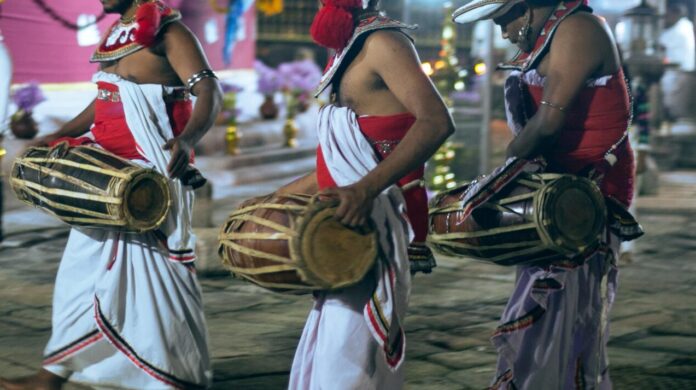How Traditional Sri Lankan Music Survived Colonization and Modernization
Across the plains of Ruhuna, in the hill country of Kandy, and along the coastal temples of the South, a sound has echoed across centuries, the heartbeat of the drum. In Sri Lanka, music is more than entertainment; it is a spiritual language and an expression of cultural identity. The island’s traditional drum culture, rooted in ritual and history, has defied war, colonial suppression and cultural erosion. Today, it stands as a symbol of resilience, carrying forward a heritage that refuses to fade.
The story of Sri Lankan percussion begins in ancient kingdoms where music was not separated from life but woven into religious and social practice. Drumming accompanied harvest rituals, royal ceremonies, temple worship and healing rites. The Geta Beraya, Yak Beraya, and Dawula were not merely musical instruments, they were sacred tools believed to connect humans to higher forces. In the Kandyan tradition, the drum was so revered that only specific families were allowed to play it, passing techniques down through generations like a spiritual inheritance.
But this profound musical tradition faced a threat during colonial rule. The Portuguese and later the British viewed indigenous rituals as “primitive,” suppressing traditional performances while promoting Western instruments and church music. Drummers were marginalized, their art driven underground. Yet in temples and hidden village gatherings, the old rhythms continued. The drum did not disappear, it adapted. Beneath colonial rule, it became a quiet act of cultural resistance.
With independence in 1948 came a cultural awakening. Sri Lanka began reclaiming its lost heritage, and drumming once again emerged in public life. The Kandyan dance tradition, powered by the commanding Geta Beraya, returned to national ceremonies. At the same time, regional drum styles revived, from the healing Thovil rituals in the South to Tamil Parai drumming in the North. The drum was no longer a fading relic; it had become the pulse of a nation rediscovering itself.
Yet the modern world introduced new challenges. Globalization brought Western pop culture and digital music, diluting younger generations’ connection to tradition. Many saw drumming as old-fashioned, an art of the past rather than a pathway to the future. But a surprising transformation began in the 21st century. Young Sri Lankan musicians started fusing traditional rhythms with hip-hop, rock, Afro-jazz and electronic music. The drum found a new voice—not in temples or royal courts, but in global stages and digital platforms. Artists like Ravibandu Vidyapathi, Jananath Warakagoda and new fusion groups have proven that traditional percussion is not static, it is evolving.
Beyond music, drumming has reclaimed its identity as a spiritual force. In an age of urban stress and emotional fragmentation, rhythmic therapy is gaining momentum. Neuroscience now supports what ancient Sri Lankan culture always understood: rhythm heals. Drum circles and ritual performances are being revived not as superstition but as community therapy and cultural preservation.
Still, the future of Sri Lanka’s drum culture depends on one question, will it continue to adapt without losing its soul? Safeguarding this heritage requires more than festivals or performances. It demands education, apprenticeships and recognition for traditional artists who dedicated their lives to mastering rhythms older than recorded history.
The Sri Lankan drum has traveled through time, conflict and change. It has called kings to power, healed the sick and carried prayers into the unknown. Today, it beats on, not as a memory, but as a living reminder that culture survives only when people choose to keep it alive.




